Vintage fantasy science fiction pulp magazine Fantastic Adventures July 1946
$26.00
This is a “good” vintage “standard” format pulp magazine published in 1946, cover date July, cover price 25 cents, 178 newsprint pages.
Includes a 9,000 word short by Robert Bloch: “Tree’s A Crowd”, the author of “Psycho”.
Cover art by Arnold Kohn.
Spine is solid, no loose or folded pages, no writing internally, no tears, edges are moderately tanned. Cover colors are bright and uniform, front and back, with perhaps some slight sunning along the spine, front and back, but not elsewhere. Cover edges and overhangs are bumped, with many small closed tears and some chipping. There is one 3/4 – 1″ closed tear at the bottom of the back cover near the spine. One small pencil annotation (a “G” ?) in the title’s “F”, otherwise no marks.
Overall, a still very pleasing copy
See the accompanying images for table of contents & full condition details.
Will ship promptly, carefully packaged, with tracking.
1 in stock
Additional information
| Weight | .5 oz |
|---|---|
| Dimensions | 10 × 5 × 2 in |
Related products
Star Wars Return of the Jedi – The Illustrated Edition First edition vintage trade novel 1983
First edition. The spine is tight, not cracked, it does have a hint of a little curl and a bit of creasing in the paper surface on the spine. No loose, torn or folded pages. Ghost of a label on the front board. Text block is flat, closes tightly. Text block edges show some tanning and thumbing. Bottom edge of front cover shows some edge wear and the lower corner is blunted. Some surface wear on front and back covers. Not a perfect copy, but still quite enchanting for the vintage Star Wars fan. See accompanying images for full condition details. Will ship promptly and carefully packaged.
Star Wars Return of the Jedi – The Illustrated Edition First edition vintage trade novel 1983
First edition. The spine is tight, not cracked, it does have a hint of a little curl and a bit of creasing in the paper surface on the spine. No loose, torn or folded pages. Ghost of a label on the front board. Text block is flat, closes tightly. Text block edges show some tanning and thumbing. Bottom edge of front cover shows some edge wear and the lower corner is blunted. Some surface wear on front and back covers. Not a perfect copy, but still quite enchanting for the vintage Star Wars fan. See accompanying images for full condition details. Will ship promptly and carefully packaged.
Vintage fantasy science fiction pulp magazine Famous Fantastic Mysteries w- Fantastic Novels August 1941
Includes the complete 112 page novel by A. Merritt "The Metal Monster". Cover art by Virgil Finlay. Spine is solid, no loose or folded pages, no writing internally, no tears, edges are just ever so mildly tanned. Cover colors are bright and uniform, front and back, with the back cover showing just some light tanning to the white background along the spine edge. Cover edges and overhangs are bumped, with many small closed tears and some chipping. There is one 1 1/2" closed tear at the bottom of the front cover near the outer edge lower corner (see images). Name neatly penciled in the yellow background of the cover masthead along with a date (?) and "Read", otherwise no discerned writing externally or internally. Overall, a still very pleasing copy, with great cover art by one of the masters of the era. See the accompanying images for table of contents & full condition details. Will ship promptly, carefully packaged, with tracking.
Vintage fantasy science fiction pulp magazine Famous Fantastic Mysteries w- Fantastic Novels August 1941
Includes the complete 112 page novel by A. Merritt "The Metal Monster". Cover art by Virgil Finlay. Spine is solid, no loose or folded pages, no writing internally, no tears, edges are just ever so mildly tanned. Cover colors are bright and uniform, front and back, with the back cover showing just some light tanning to the white background along the spine edge. Cover edges and overhangs are bumped, with many small closed tears and some chipping. There is one 1 1/2" closed tear at the bottom of the front cover near the outer edge lower corner (see images). Name neatly penciled in the yellow background of the cover masthead along with a date (?) and "Read", otherwise no discerned writing externally or internally. Overall, a still very pleasing copy, with great cover art by one of the masters of the era. See the accompanying images for table of contents & full condition details. Will ship promptly, carefully packaged, with tracking.
Astounding Science Fiction February 1956 Robert Heinlein Serial
Cool Kelly Freas cover art, with internal art done by Freas, Emsh, and van Dongen. Nice! No loose, torn, or folded pages. Binding is tight and intact. No writing. Pages are tanned on edges and are somewhat brittle, some edge chipping on some See accompanying images for full condition details and table of contents. Will ship promptly, carefully packaged.
Astounding Science Fiction February 1956 Robert Heinlein Serial
Cool Kelly Freas cover art, with internal art done by Freas, Emsh, and van Dongen. Nice! No loose, torn, or folded pages. Binding is tight and intact. No writing. Pages are tanned on edges and are somewhat brittle, some edge chipping on some See accompanying images for full condition details and table of contents. Will ship promptly, carefully packaged.
Vintage Sci-Fi Paperback: My Name is Legion by Roger Zelazny, 1981 Edition
Shows slight minimal aging and a little edge wear on covers, but no significant flaws (no writing, tags, marks, loose, torn or folded pages). Certainly a great addition to a vintage science fiction collection and a worthy gift! See the accompanying images for full condition details. Will ship promptly, carefully packaged, with tracking. About the book: "My Name is Legion" by Roger Zelazny is a "science fiction" story line that combines cyberpunk elements with existential depth. The book consists of three interconnected novellas ("The Eve of Ragnarok," "Kjwalll'kje'k'koothaïlll'kje'k," and "'Home is the Hangman") that follow a futuristic investigator known only as "Legion"—a man with no legal identity who manipulates global surveillance systems to solve crimes. The novellas: "The Eve of RUMOKO" – The protagonist must uncover a saboteur on a project using nuclear explosives to create artificial islands. "'Kjwalll'kje'k'koothai'lll'kje'k" – Set at a research station in the Bahamas, the hero investigates a diver’s mysterious death, possibly involving dolphins. "Home Is the Hangman" – A sentient robot, lost years before, may have returned to Earth to kill its creators. These stories are linked by their protagonist and themes of identity, surveillance, and the ethical dilemmas of technology. They are not directly connected to Zelazny’s other famous works like "The Last Defender of Camelot" or "For a Breath I Tarry". Why You Should Read It: 1) Cyberpunk Before Cyberpunk – Zelazny’s vision of a hyper-surveilled society predates Neuromancer and other cyberpunk classics, making it a fascinating proto-cyberpunk gem. 2) Philosophical & Psychological Depth – The protagonist grapples with identity, free will, and the nature of humanity, themes that remain deeply relevant in today’s AI-driven world. 3) Award-Winning Excellence – The final novella, "'Home is the Hangman," won both the Nebula in 1976 and Hugo 1976 for Best Novella. Also nominated for the Locus Award for Best Collection in 1977. If You Enjoyed These, then "My Name is Legion" is likely to be in your wheelhouse: >>John Brunner – The Shockwave Rider (for its take on computer networks and identity) >>Alfred Bester – The Demolished Man (for noir SF with a psychological edge) >>Philip K. Dick – A Scanner Darkly (for its themes of surveillance and shifting identity) Interesting Facts: The second story’s title, "'Kjwalll'kje'k'koothai'lll'kje'k," is intentionally unpronounceable, reflecting the communication barrier between humans and dolphins—a clever nod to the story’s central mystery. The title "My Name is Legion" is a biblical reference, taken from the Gospel of Mark, where a demon identifies himself as "Legion, for we are many." Zelazny chose this title to reflect the protagonist's fragmented identity and his ability to assume different roles and personas. Relevance Today: The themes explored in "My Name is Legion," such as the impact of technology on society and the nature of identity, are still relevant today. Zelazny's vision of a future where technology has blurred the lines between human and machine is both fascinating and cautionary.
Vintage Sci-Fi Paperback: My Name is Legion by Roger Zelazny, 1981 Edition
Shows slight minimal aging and a little edge wear on covers, but no significant flaws (no writing, tags, marks, loose, torn or folded pages). Certainly a great addition to a vintage science fiction collection and a worthy gift! See the accompanying images for full condition details. Will ship promptly, carefully packaged, with tracking. About the book: "My Name is Legion" by Roger Zelazny is a "science fiction" story line that combines cyberpunk elements with existential depth. The book consists of three interconnected novellas ("The Eve of Ragnarok," "Kjwalll'kje'k'koothaïlll'kje'k," and "'Home is the Hangman") that follow a futuristic investigator known only as "Legion"—a man with no legal identity who manipulates global surveillance systems to solve crimes. The novellas: "The Eve of RUMOKO" – The protagonist must uncover a saboteur on a project using nuclear explosives to create artificial islands. "'Kjwalll'kje'k'koothai'lll'kje'k" – Set at a research station in the Bahamas, the hero investigates a diver’s mysterious death, possibly involving dolphins. "Home Is the Hangman" – A sentient robot, lost years before, may have returned to Earth to kill its creators. These stories are linked by their protagonist and themes of identity, surveillance, and the ethical dilemmas of technology. They are not directly connected to Zelazny’s other famous works like "The Last Defender of Camelot" or "For a Breath I Tarry". Why You Should Read It: 1) Cyberpunk Before Cyberpunk – Zelazny’s vision of a hyper-surveilled society predates Neuromancer and other cyberpunk classics, making it a fascinating proto-cyberpunk gem. 2) Philosophical & Psychological Depth – The protagonist grapples with identity, free will, and the nature of humanity, themes that remain deeply relevant in today’s AI-driven world. 3) Award-Winning Excellence – The final novella, "'Home is the Hangman," won both the Nebula in 1976 and Hugo 1976 for Best Novella. Also nominated for the Locus Award for Best Collection in 1977. If You Enjoyed These, then "My Name is Legion" is likely to be in your wheelhouse: >>John Brunner – The Shockwave Rider (for its take on computer networks and identity) >>Alfred Bester – The Demolished Man (for noir SF with a psychological edge) >>Philip K. Dick – A Scanner Darkly (for its themes of surveillance and shifting identity) Interesting Facts: The second story’s title, "'Kjwalll'kje'k'koothai'lll'kje'k," is intentionally unpronounceable, reflecting the communication barrier between humans and dolphins—a clever nod to the story’s central mystery. The title "My Name is Legion" is a biblical reference, taken from the Gospel of Mark, where a demon identifies himself as "Legion, for we are many." Zelazny chose this title to reflect the protagonist's fragmented identity and his ability to assume different roles and personas. Relevance Today: The themes explored in "My Name is Legion," such as the impact of technology on society and the nature of identity, are still relevant today. Zelazny's vision of a future where technology has blurred the lines between human and machine is both fascinating and cautionary.
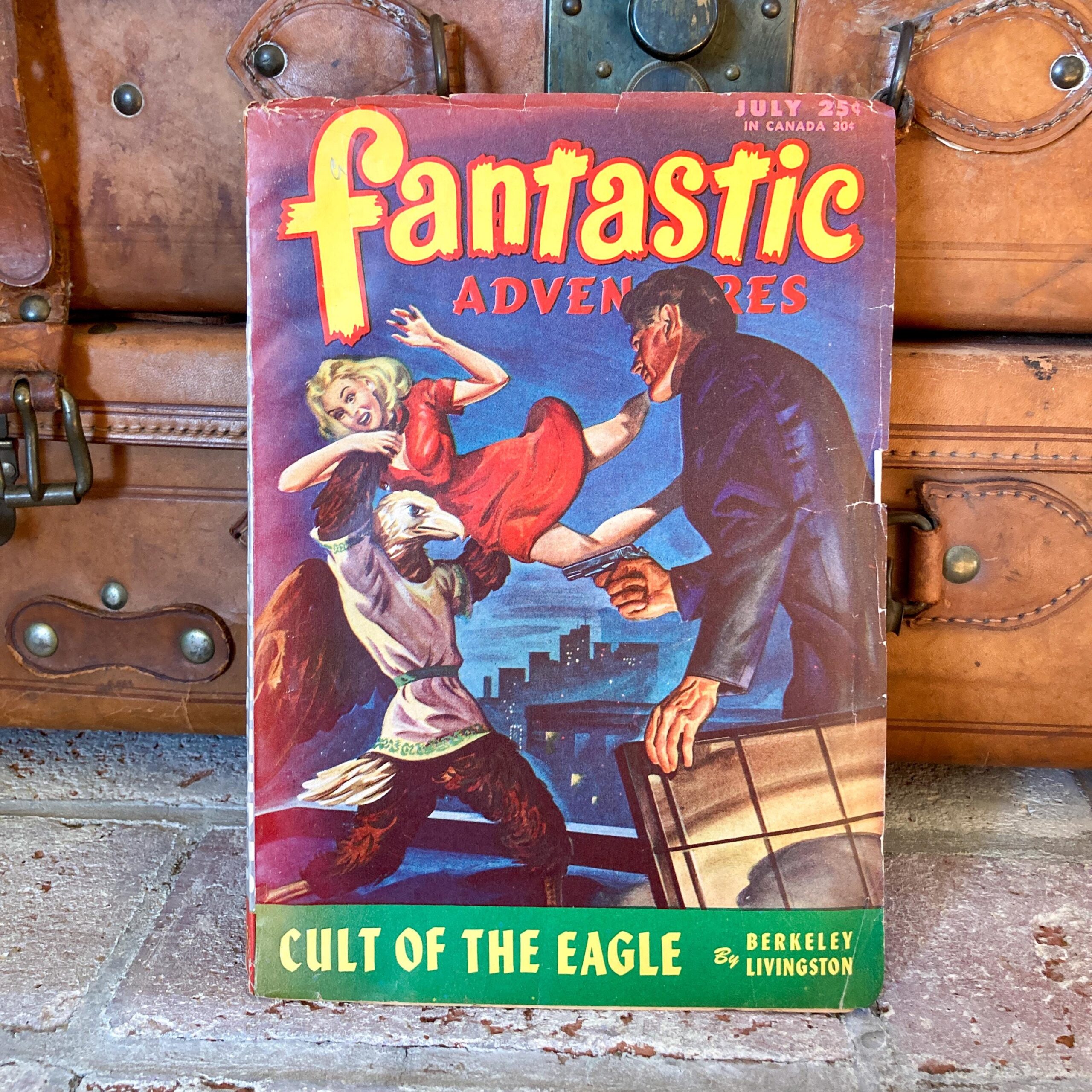
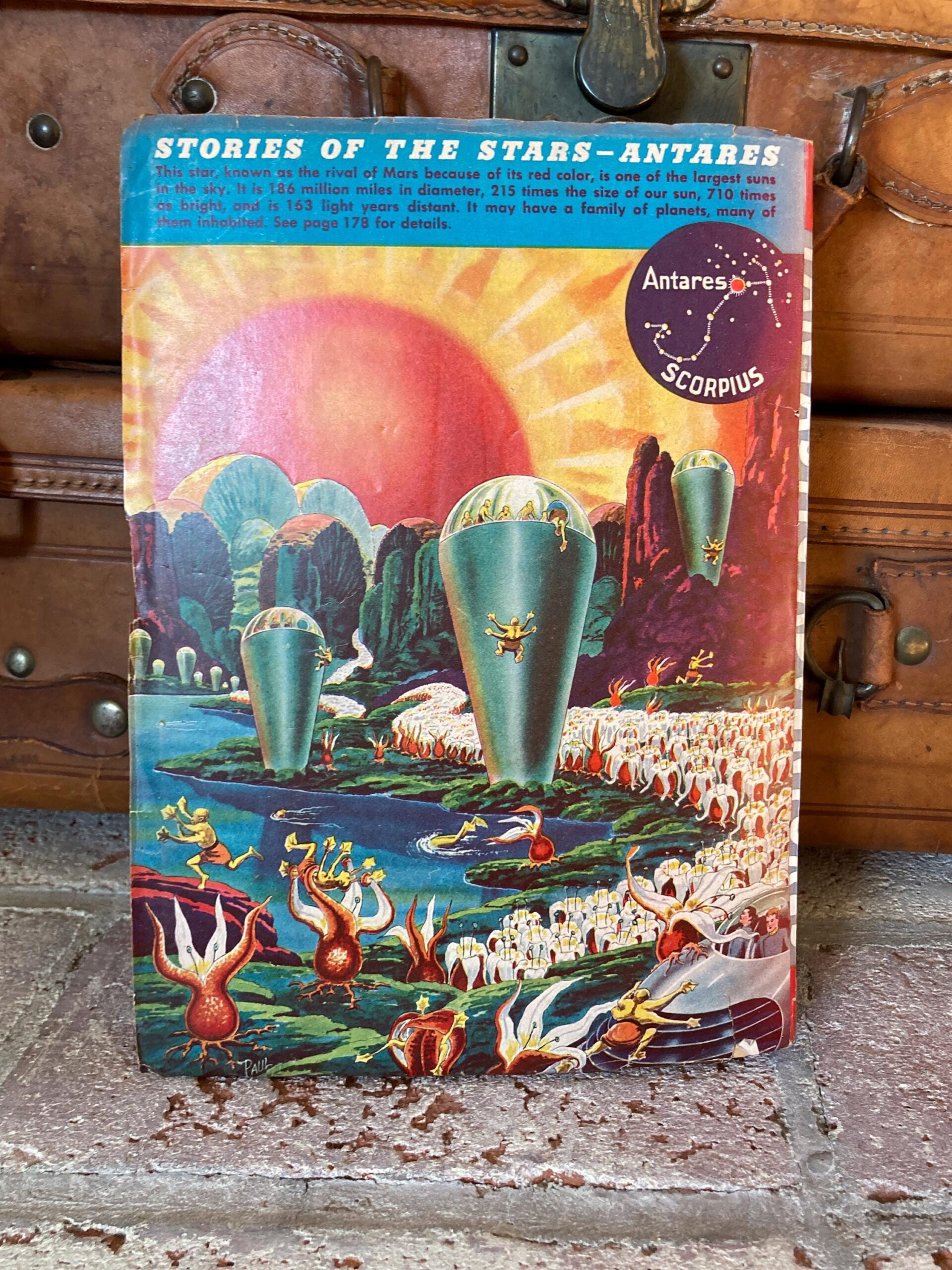
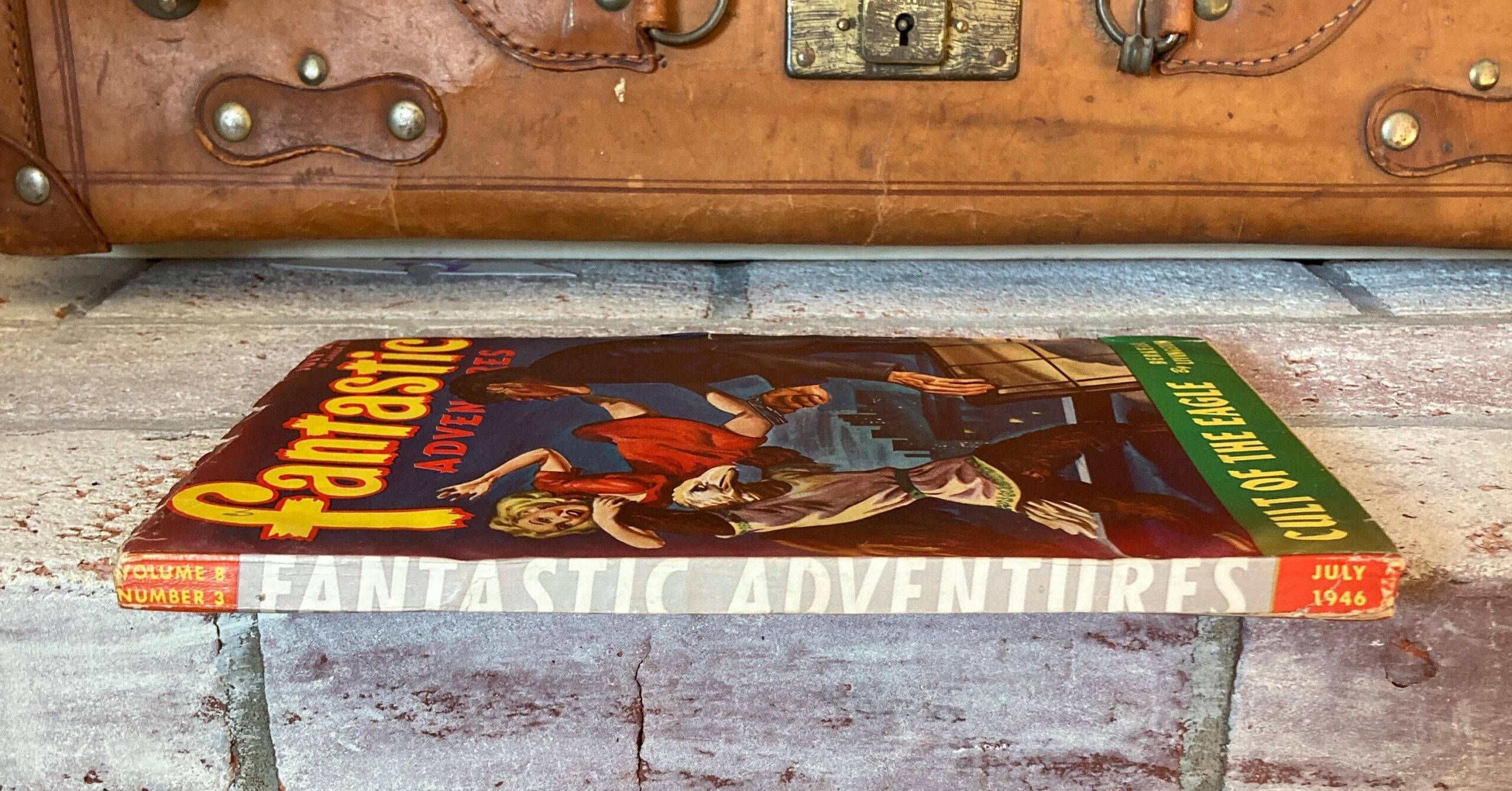
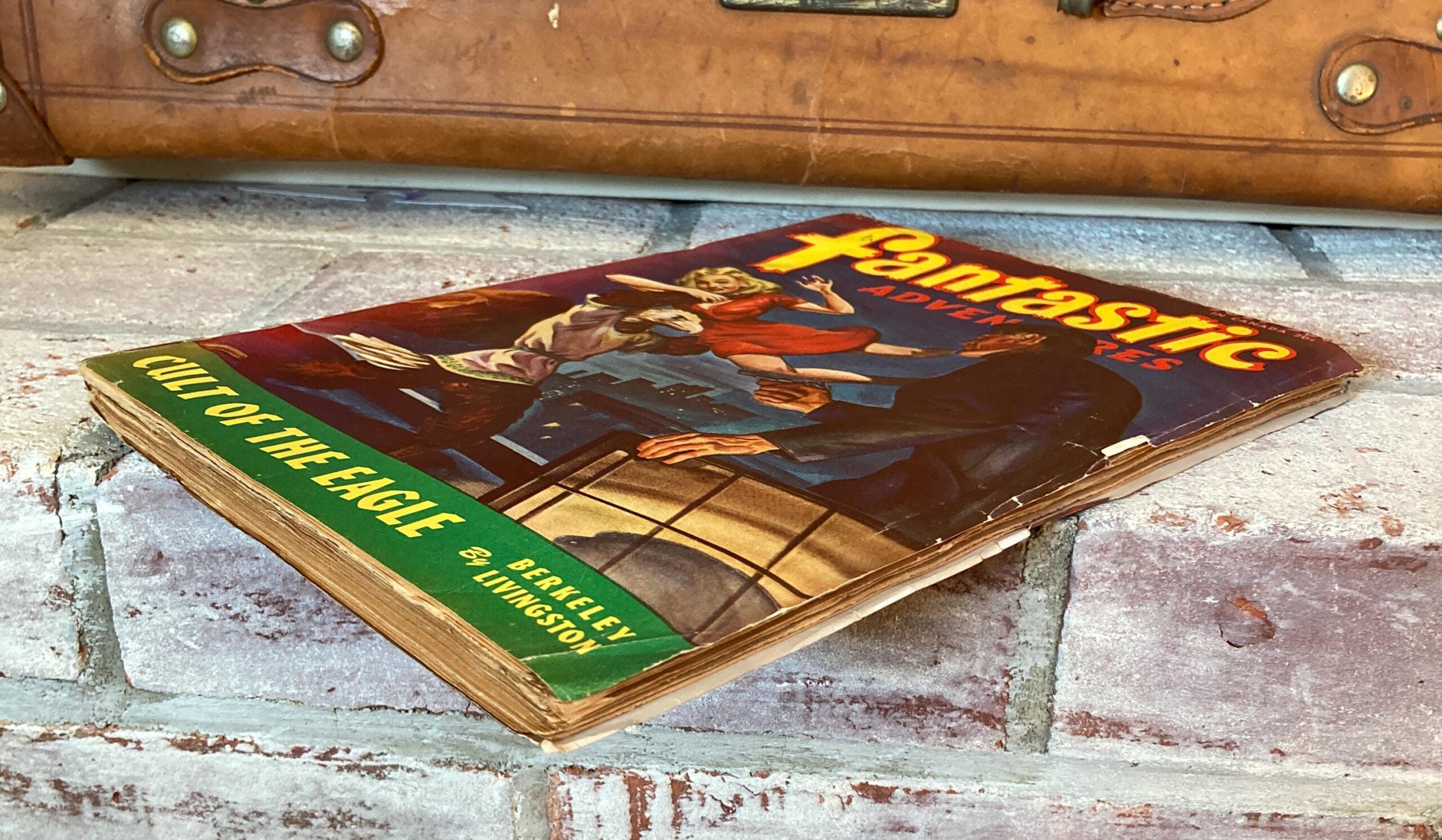
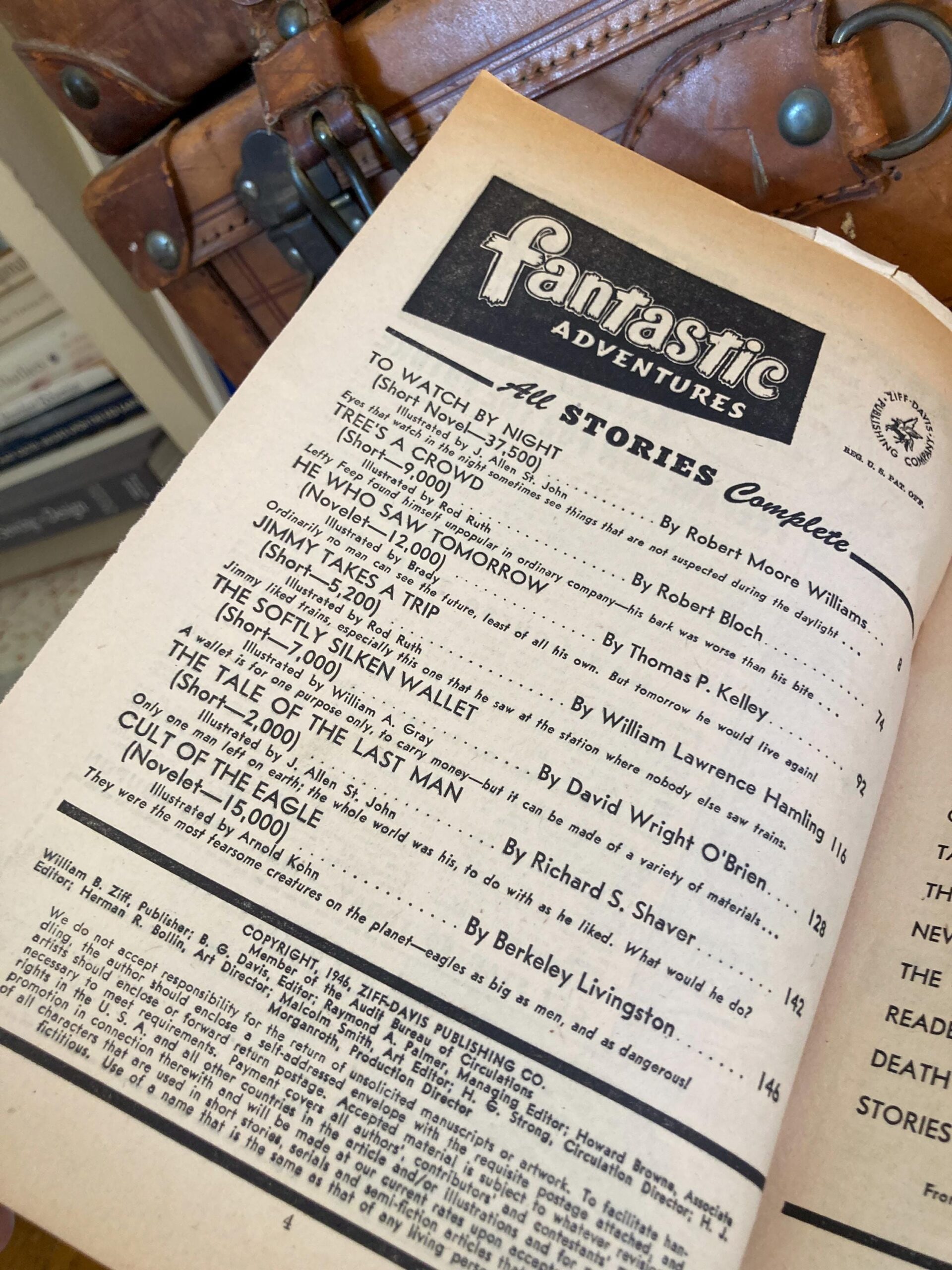
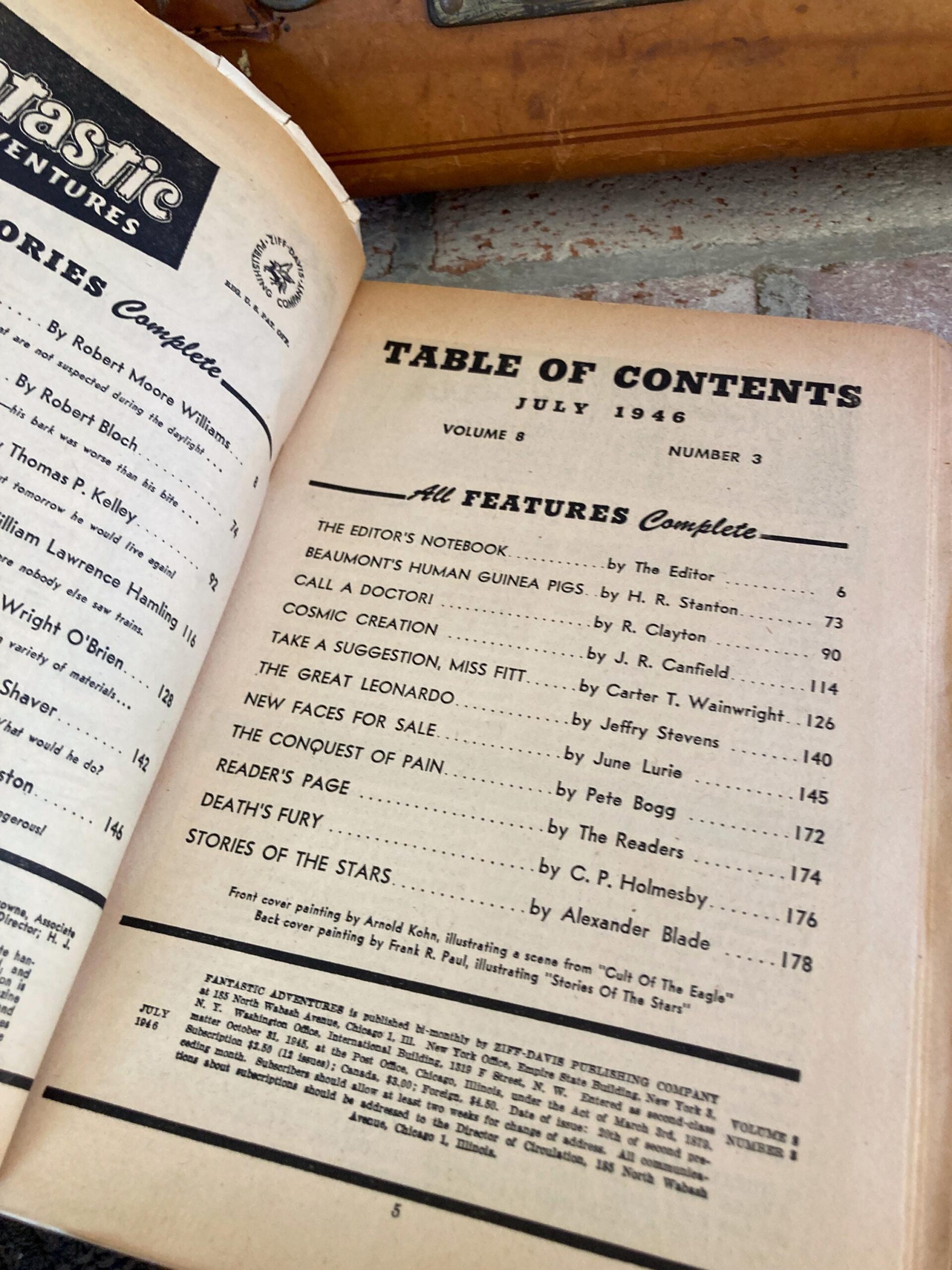
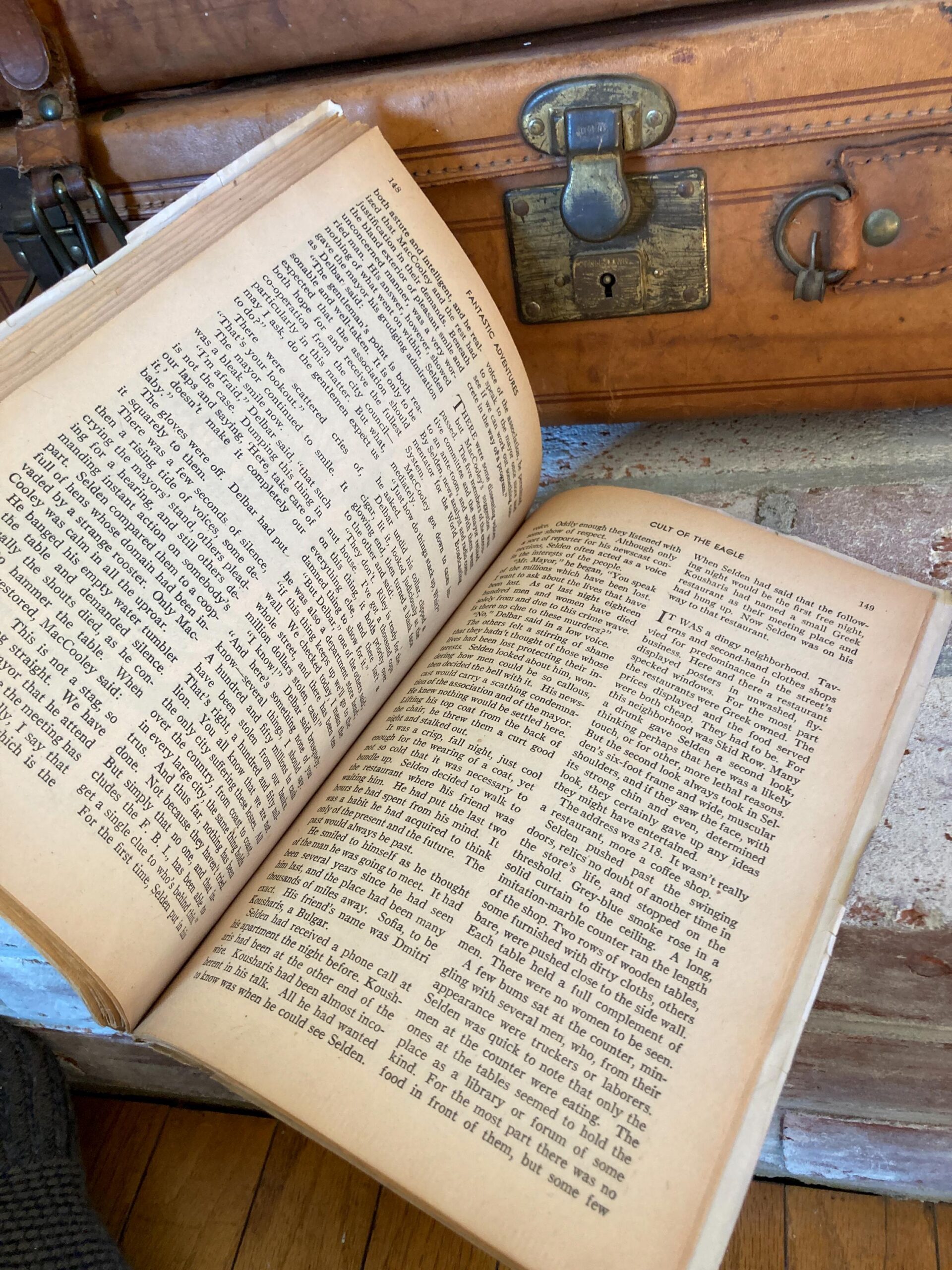
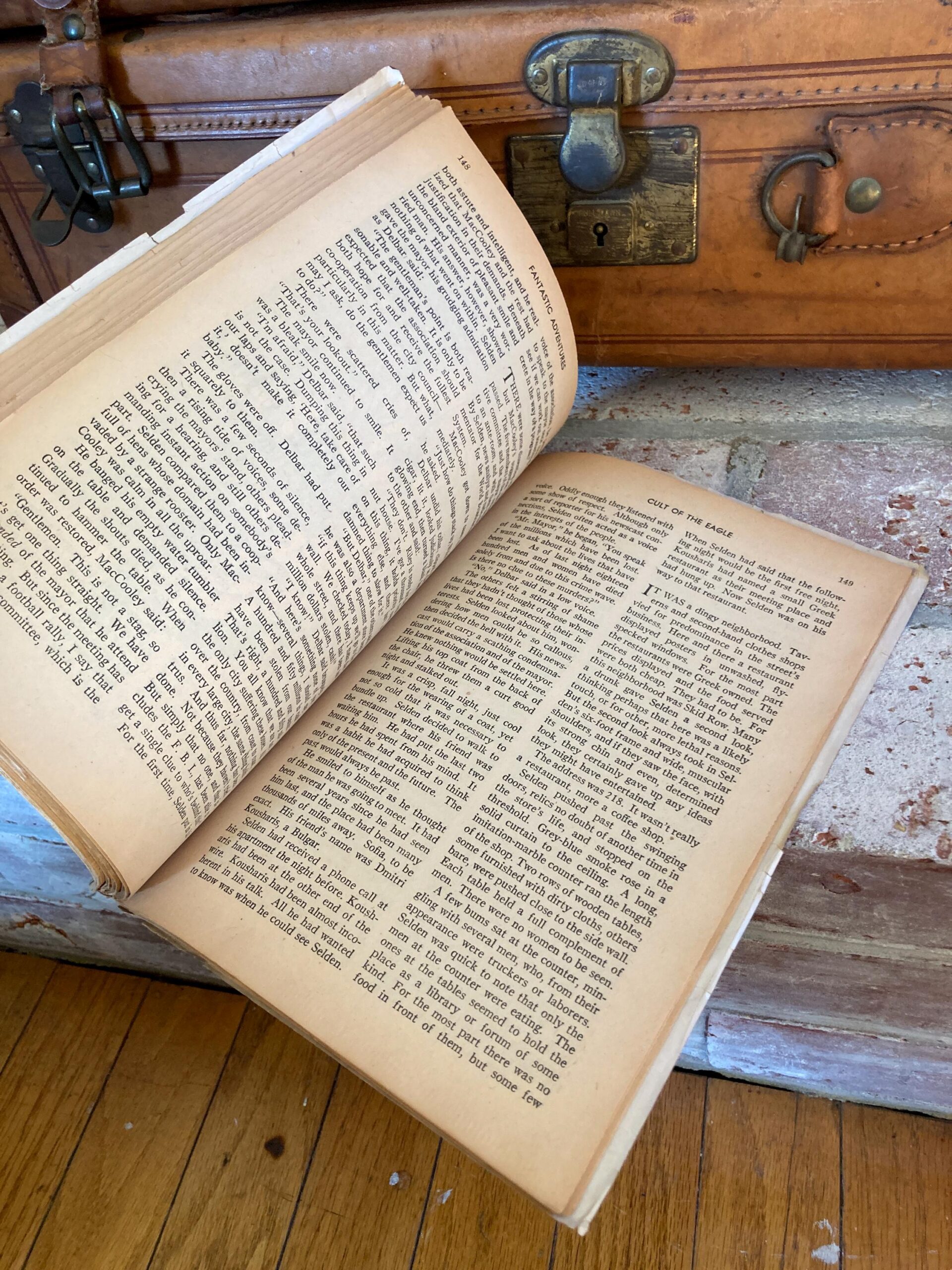
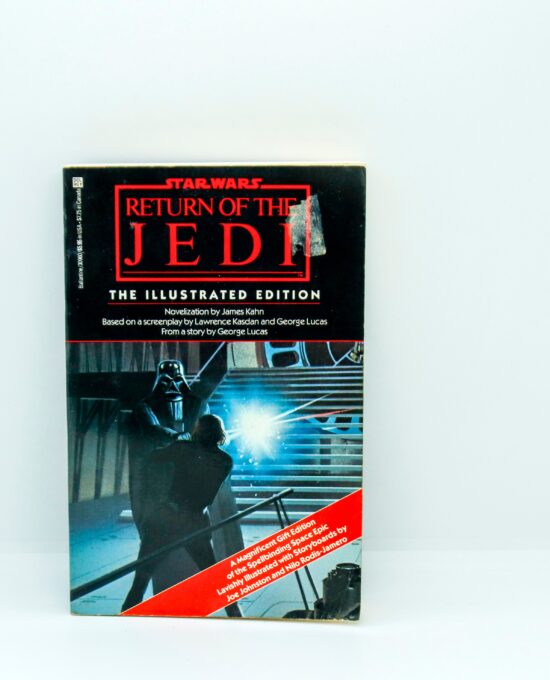
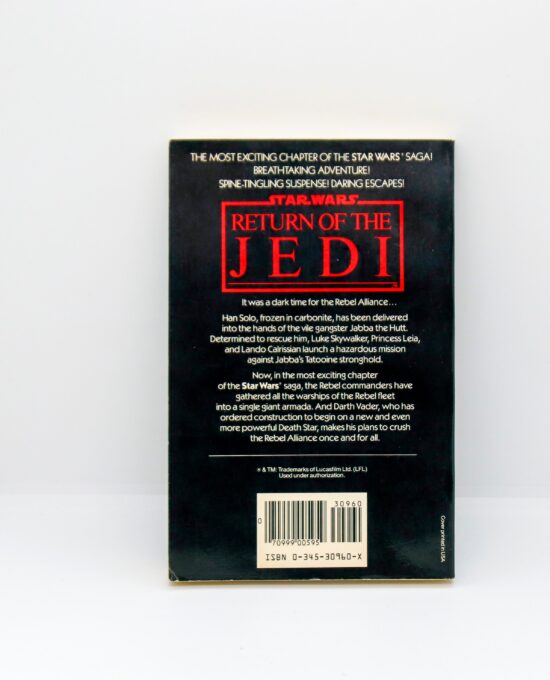
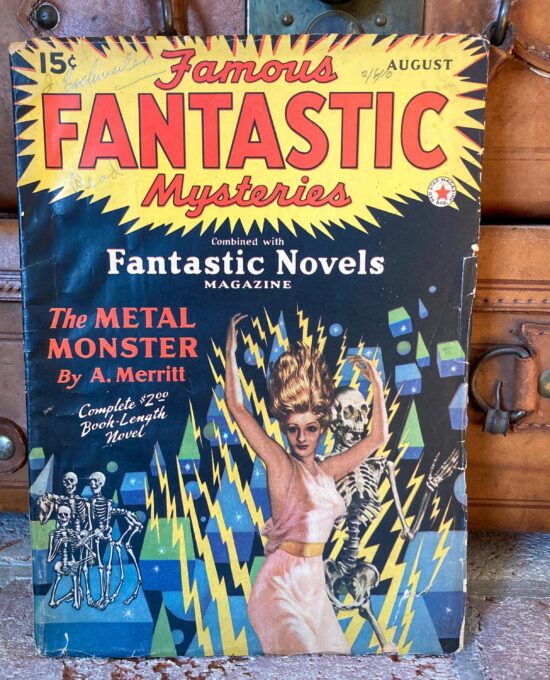

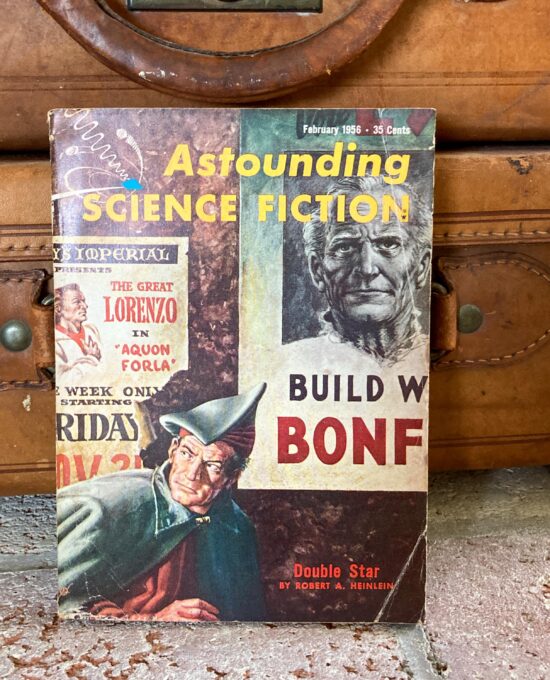
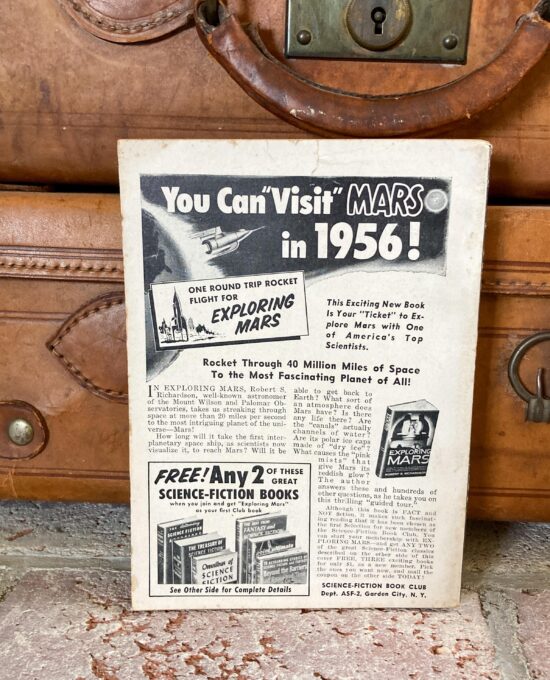
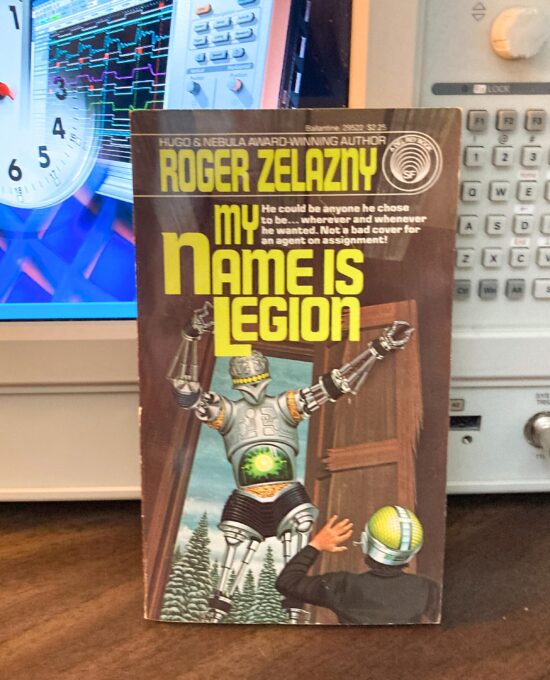
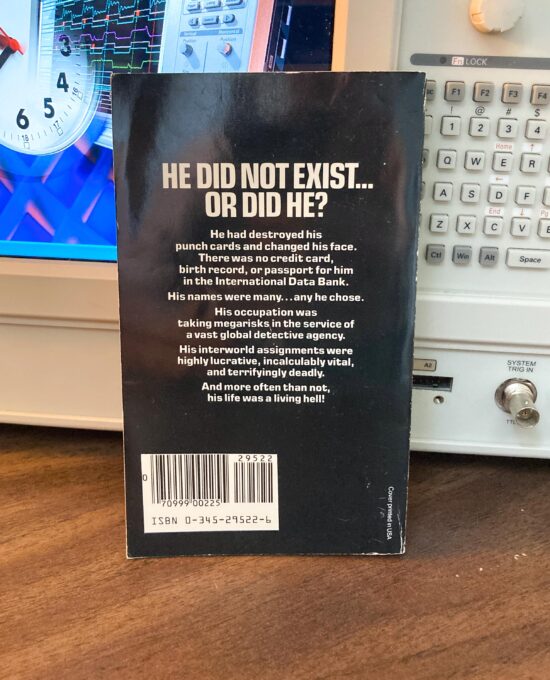
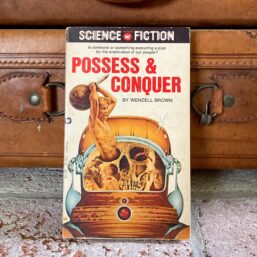
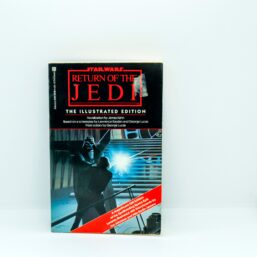
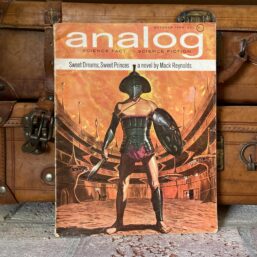
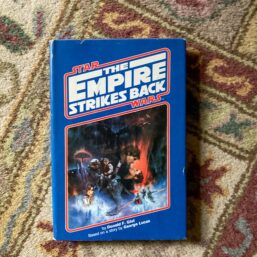
Reviews
There are no reviews yet.